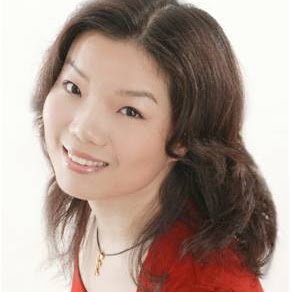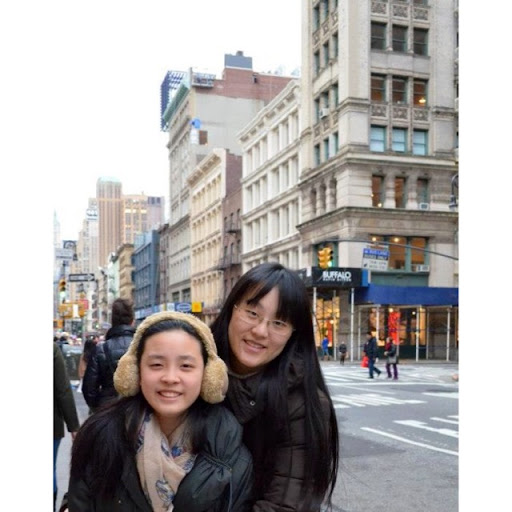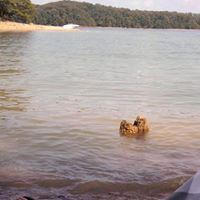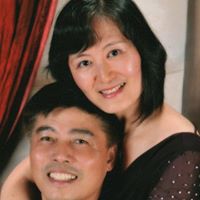Ling Liu
age ~54
from Niantic, CT
- Also known as:
-
- Lin G Liu
- Ling Lin
Ling Liu Phones & Addresses
- Niantic, CT
- San Francisco, CA
- Oakland, CA
Specialities
Property Management
Name / Title
Company / Classification
Phones & Addresses
Owner
Liu, Ling
Travel Agency
Travel Agency
280 Bridgehead Ln, Hayward, CA 94544
Owner, Principal
Eastern Healing Acupuncture Herb Clinic
Health Practitioner's Office
Health Practitioner's Office
865 W El Camino Real, Mountain View, CA 94040
6509651188
6509651188
Soc signatory
OAKTREE ALEWIFE, LLC
THE MASON MARATHON, INC
License Records
Ling Liu
License #:
24299 - Expired
Issued Date:
Dec 23, 2005
Renew Date:
Jun 1, 2006
Expiration Date:
May 31, 2008
Type:
Certified Public Accountant
Isbn (Books And Publications)

Us Patents
-
User Interface Management For Controlled Devices
view source -
US Patent:20020105543, Aug 8, 2002
-
Filed:Feb 7, 2001
-
Appl. No.:09/779046
-
Inventors:Sheng Dong - Fremont CA, US
Qiaoyun Li - Cupertino CA, US
Ling Liu - Milpitas CA, US -
International Classification:G06F013/00
-
US Classification:345/744000, 345/740000
-
Abstract:In one embodiment, the present invention determines an identification corresponding to a device and a user interface corresponding to the identification of the device is remotely loaded from a remote source. In another embodiment, a user interface corresponding to the identification of the device is locally loaded from a local source. In yet another embodiment, a basic user interface corresponding to the identification of the device is loaded if a user interface corresponding to the identification of the device is not found by searching remotely or locally.
-
Incorporating Recency In Network Search Using Machine Learning
view source -
US Patent:20110093459, Apr 21, 2011
-
Filed:Oct 15, 2009
-
Appl. No.:12/579855
-
Inventors:Anlei Dong - Fremont CA, US
Yi Chang - Santa Clara CA, US
Ruiqiang Zhang - Cupertino CA, US
Zhaohui Zheng - Mountain View CA, US
Gilad Avraham Mishne - Oakland CA, US
Jing Bai - San Jose CA, US
Karolina Barbara Buchner - San Jose CA, US
Ciya Liao - Fremont CA, US
Shihao Ji - Santa Clara CA, US
Gilbert Leung - Mountain View CA, US
Georges-Eric Albert Marie Robert Dupret - Mountain View CA, US
Ling Liu - Mountain View CA, US -
Assignee:YAHOO! INC. - Sunnyvale CA
-
International Classification:G06F 17/30
-
US Classification:707725, 707E17014, 707780
-
Abstract:In one embodiment, access a set of recency ranking data comprising one or more recency search queries and one or more recency search results, each of the recency search queries being recency-sensitive with respect to a particular time period and being associated with a query timestamp representing the time at which the recency search query is received at a search engine, each of the recency search results being generated by the search engine for one of the recency search queries and comprising one or more recency network resources. Construct a plurality of recency features from the set of recency ranking data. Train a first ranking model via machine learning using at least the recency features.
-
Gas Turbine Engine Airfoil
view source -
US Patent:20190063227, Feb 28, 2019
-
Filed:Jul 30, 2018
-
Appl. No.:16/048981
-
Inventors:- Farmington CT, US
Byron R. Monzon - Cromwell CT, US
Ling Liu - Glastonbury CT, US
Linda S. Li - Middlefield CT, US
Darryl Whitlow - Middletown CT, US
Barry M. Ford - Middletown CT, US -
International Classification:F01D 5/14
F01D 5/02
F02C 3/04
F02C 3/14
F01D 15/12 -
Abstract:An airfoil for a turbine engine includes an airfoil having pressure and suction sides extending in a radial direction from a 0% span position at an inner flow path location to a 100% span position at an airfoil tip. The airfoil has a curve corresponding to a relationship between a trailing edge sweep angle and a span position. The trailing edge sweep angle is in a range of 0 to 10 in a range of 10-20% span position. The trailing edge sweep angle is in a range of the trailing edge sweep angle is positive from 0% span to at least 95% span.
-
Gas Turbine Engine Airfoil
view source -
US Patent:20180016912, Jan 18, 2018
-
Filed:Sep 15, 2017
-
Appl. No.:15/706025
-
Inventors:- Farmington CT, US
Byron R. Monzon - Cromwell CT, US
Ling Liu - Glastonbury CT, US
Linda S. Li - Middlefield CT, US
Darryl Whitlow - Middletown CT, US
Barry M. Ford - Middletown CT, US -
International Classification:F01D 5/14
-
Abstract:A gas turbine engine include a combustor section arranged between a compressor section and a turbine section. A fan section has multiple fan blades. A geared architecture couples the fan section to the turbine section or compressor section. The fan blades include an airfoil that has pressure and suction sides. The airfoil extends in a radial direction from a 0% span position at an inner flow path location to a 100% span position at an airfoil tip. The airfoil has a relationship between a trailing edge dihedral and a span position. The trailing edge dihedral positive from the 0% span position to the 100% span position. A positive dihedral corresponds to suction side-leaning and a negative dihedral corresponds to pressure side-leaning.
-
Gas Turbine Engine Airfoil
view source -
US Patent:20170241268, Aug 24, 2017
-
Filed:Aug 22, 2014
-
Appl. No.:15/113607
-
Inventors:- Farmington CT, US
Byron R. Monzon - Cromwell CT, US
Ling Liu - Glastonbury CT, US
Linda S. Li - Middlefield CT, US
Darryl Whitlow - Middletown CT, US
Barry M. Ford - Middletown CT, US -
International Classification:F01D 5/14
F02C 7/36
F02C 3/04 -
Abstract:An airfoil for a turbine engine includes pressure and suction sides extending in a radial direction from a 0% span position at an inner flow path location to a 100% span position at an airfoil tip. The airfoil has a relationship between an axial leading edge location and a span position that is at least a third order polynomial with a generally U-shaped curve having an initial negative slope followed by a positive slope. The positive slope leans aftward and the negative slope leans forward. The curve has a critical point in the range of 30-50% span position at which the curve changes from the negative slope to the positive slope. The curve is generally linear from 55% span to 75% span and has a positive slope that increases at a rate of about 0.0875 inch (2.22 mm) per 1% span, +/−0.04 inch (1.01 mm) per 1% span.
-
Gas Turbine Engine Airfoil
view source -
US Patent:20170191494, Jul 6, 2017
-
Filed:Mar 27, 2017
-
Appl. No.:15/470462
-
Inventors:- Farmington CT, US
Byron R. Monzon - Cromwell CT, US
Ling Liu - Glastonbury CT, US
Linda S. Li - Middlefiedl CT, US
Darryl Whitlow - Middletown CT, US
Barry M. Ford - Middletown CT, US -
International Classification:F04D 29/32
F04D 29/38
F02K 3/06
F04D 19/00 -
Abstract:An airfoil for a turbine engine includes an airfoil that has pressure and suction sides that extend in a radial direction from a 0% span position at an inner flow path location to a 100% span position at an airfoil tip. The airfoil has a curve that corresponds to a relationship between a trailing edge sweep angle and a span position. The trailing edge sweep angle is in a range of 10 to 20 in a range of 40-70% span position. The trailing edge sweep angle is positive from 0% span to at least 95% span. The airfoil has a relationship between a leading edge dihedral and a span position. The leading edge dihedral is negative from the 0% span position to the 100% span position. A positive dihedral corresponds to suction side-leaning. A negative dihedral corresponds to pressure side-leaning. The trailing edge sweep angle is positive from 0%-95% span. A positive-most trailing edge sweep angle is within the range of 10 to 20 in the range of 40-70% span position. The airfoil is a fan blade for the turbine engine.
-
Gas Turbine Engine Airfoil
view source -
US Patent:20170184119, Jun 29, 2017
-
Filed:Mar 16, 2017
-
Appl. No.:15/460333
-
Inventors:- Farmington CT, US
Byron R. Monzon - Cromwell CT, US
Ling Liu - Glastonbury CT, US
Linda S. Li - Middlefield CT, US
Darryl Whitlow - Middletown CT, US
Barry M. Ford - Middletown CT, US -
International Classification:F04D 29/38
F02K 3/06
F04D 29/32
F02C 3/04 -
Abstract:A gas turbine engine includes a combustion section arranged between a compressor section and a turbine section that extend in an axial direction. A fan section is arranged upstream from the compressor section. An airfoil is arranged in one of the fan section, the compressor section and the turbine section. The airfoil includes pressure and suction sides extending in a radial direction from a 0% span position at an inner flow path location to a 100% span position at an airfoil tip. The airfoil has a leading edge that is projected onto a plane from various views and the plane is perpendicular to a viewing direction which corresponds to the various views. The plane is parallel with the axial direction in a 0 view. The various views include the 0 view which projects into an axial plane in the axial direction. A 90 view projects into a tangential plane in a tangential direction normal to the axial direction and views between the 0 and 90 views. The airfoil has a maximum leading edge projection in a 20 to view. The radial direction is normal to the axial and tangential directions.
-
Gas Turbine Engine Airfoil
view source -
US Patent:20170130586, May 11, 2017
-
Filed:Jan 27, 2017
-
Appl. No.:15/418115
-
Inventors:- Farmington CT, US
Byron R. Monzon - Cromwell CT, US
Ling Liu - Glastonbury CT, US
Linda S. Li - Middlefield CT, US
Darryl Whitlow - Middletown CT, US
Barry M. Ford - Middletown CT, US -
International Classification:F01D 5/14
-
Abstract:An airfoil for a turbine engine includes an airfoil that has pressure and suction sides that extend in a radial direction from a 0% span position at an inner flow path location to a 100% span position at an airfoil tip. The airfoil has a relationship between a leading edge dihedral and a span position. The leading edge dihedral is negative from the 0% span position to the 100% span position. A positive dihedral corresponds to suction side-leaning, and a negative dihedral corresponds to pressure side-leaning. The airfoil has a relationship between a trailing edge dihedral and a span position. The trailing edge dihedral is positive from the 0% span position to the 100% span position. A positive dihedral corresponds to suction side-leaning and a negative dihedral corresponds to pressure side-leaning. The airfoil includes at least one of a least negative dihedral in a range of 5-15% span position, a least negative dihedral in a range of 0-10% span position and a least positive trailing edge dihedral in a 40%-55% span position.
Plaxo

Ling ling Liu
view sourceUtrechtSenior Programmer at Accenture Technology Solution... Experienced in EAI middleware development and implementation, certified in TIBCO BusinessWorks5.2,familiar with WebMethods, SonicMQ, WebSphere.

Ling Liu
view sourceClassmates

Ling Liu
view sourceSchools:
Ridgeview High School Atlanta GA 1985-1989
Community:
Allison Henning, Heidi Morton, Jolie Ellis

Ling Liu, McMaster Univer...
view source
Liu Ling | Kentucky Mount...
view source
St. Stephen's Girls High ...
view sourceGraduates:
Mun Ling Ng (1988-1992),
lok Lee (1998-2002),
Shiren Ho (1998-2002),
Oi Ling Liu (1981-1985),
Prima Wong (1985-1991)
lok Lee (1998-2002),
Shiren Ho (1998-2002),
Oi Ling Liu (1981-1985),
Prima Wong (1985-1991)

Brillantmont High School,...
view sourceGraduates:
Ling Ling Liu (1989-1992),
Alberto Sanchez Garcia (1998-1998),
Atossa Shafa (1985-1987),
Rose Farhi (1973-1974)
Alberto Sanchez Garcia (1998-1998),
Atossa Shafa (1985-1987),
Rose Farhi (1973-1974)

Olive Elementary School, ...
view sourceGraduates:
Mark Hall (1975-1980),
ling Liu (1980-1984),
Tom Merchant (1975-1982),
Ronald Lamoreaux (1963-1967)
ling Liu (1980-1984),
Tom Merchant (1975-1982),
Ronald Lamoreaux (1963-1967)

Indiana University - Law,...
view sourceGraduates:
ling Liu (2002-2002),
Noble Littell (1952-1954),
Daniel Moore (1999-2002),
Michael Sanchez (1990-1993),
Debra Kaplan (2002-2005)
Noble Littell (1952-1954),
Daniel Moore (1999-2002),
Michael Sanchez (1990-1993),
Debra Kaplan (2002-2005)

Ridgeview High School, At...
view sourceGraduates:
X Z (1996-2000),
Ling Liu (1985-1989),
Jrffrey Moore (1973-1978),
Herb Zachry (1976-1980),
Peter Ketcham (1976-1980)
Ling Liu (1985-1989),
Jrffrey Moore (1973-1978),
Herb Zachry (1976-1980),
Peter Ketcham (1976-1980)
Youtube
Myspace
Googleplus

Ling Liu
Work:
Procter & Gamble - Singapore
Education:
Nanjing University

Ling Liu
Education:
Pasadena City College

Ling Liu
Education:
NKU
About:
An evil kid
Bragging Rights:
Used to be so easy......

Ling Liu
Work:
LinkedIn

Ling Liu (Lynne)

Ling Liu

Ling Liu

Ling Liu

Ling Li Liu
view source
Oi Ling Liu
view source
Ling Long Liu
view source
Siu Ling Liu
view source
Ling Liu
view source
Ling Liu
view source
Ling Liu
view source
Ling Yee Liu
view sourceNews

It's a wrap: Paris fashionistas look to arctic winter
view source- At Cacharel, where the Chinese duo Ling Liu and Dawei Sun were showing their second collection, the focus was on coats, warm outfits in wool or felt, and sensual knit dresses that wrapped up around the neck.
- Date: Mar 04, 2012
- Category: Entertainment
- Source: Google
Flickr
Get Report for Ling Liu from Niantic, CT, age ~54














